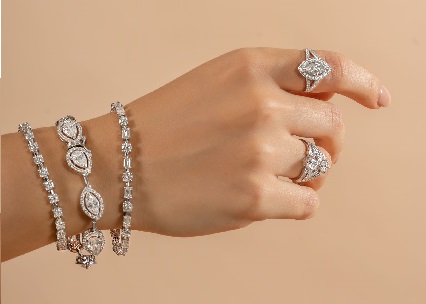Introduction
In the world of diamonds, the 4Cs—Cut, Clarity, Color, and Carat—have long been the standard by which these precious gems are judged. However, with advancements in technology and a growing awareness of sustainability, lab grown diamonds are emerging as a compelling alternative to mined diamonds. This article delves into the fascinating realm of lab grown diamonds, exploring how they measure up in terms of the 4Cs and what sets them apart in today’s market.
The Rise of Lab Grown Diamonds 4Cs
In recent years, lab grown diamonds 4Cs have gained significant traction among consumers who value ethical sourcing and environmental sustainability. These diamonds, also known as cultured or synthetic diamonds, are created in laboratories using advanced technological processes that replicate the natural conditions under which diamonds form in the Earth’s mantle. The result? Stones that are chemically, physically, and optically identical to mined diamonds but with a smaller ecological footprint.
What are Lab Grown Diamonds?
Lab grown diamonds are created through two primary methods: High Pressure-High Temperature (HPHT) and Chemical Vapor Deposition (CVD). In the HPHT method, a small diamond seed is placed in a carbon-rich environment and subjected to extreme pressure and high temperatures to stimulate diamond growth. On the other hand, the CVD method involves placing a diamond seed in a chamber filled with carbon-rich gases, where a chemical reaction forms layers of diamond over time.
Exploring the 4Cs of Lab Grown Diamonds
Now, let’s delve into how lab grown diamonds measure up in terms of the 4Cs:
1. Cut
The cut of a diamond refers to its proportions, symmetry, and polish—the factors that determine its brilliance and sparkle. Lab grown diamonds are known for their excellent cut quality, often exceeding the standards of their mined counterparts. Skilled diamond cutters use precise techniques to maximize the stone’s light reflection and refraction, resulting in a dazzling display of fire and brilliance.
Lab grown diamonds are cut to maximize their optical properties, ensuring they sparkle just as brilliantly as natural diamonds.
The precision in cutting enhances the diamond’s ability to reflect light, making it appear larger and more radiant than its carat weight might suggest.
2. Clarity
Clarity measures the absence of internal flaws (inclusions) and external blemishes in a diamond. Like mined diamonds, lab grown diamonds undergo rigorous grading to assess their clarity. Advanced technology allows for precise detection and mapping of any imperfections within the stone. In many cases, lab grown diamonds boast exceptional clarity grades, with fewer visible flaws compared to mined diamonds.
Lab grown diamonds often have higher clarity grades due to the controlled environment in which they are grown, resulting in fewer inclusions and blemishes.
Advanced imaging techniques, such as laser scanning and magnification, ensure accurate assessment and grading of clarity characteristics.
3. Color
Diamond color refers to the presence or absence of color within the stone. The most valuable diamonds are colorless, with a pure crystalline structure that allows light to pass through effortlessly. Lab grown diamonds typically exhibit minimal to no color, falling within the colorless to near-colorless range (D to J on the GIA color grading scale). This makes them highly desirable for engagement rings and other jewelry pieces where color purity is prized.
Through precise control over the growth environment, lab grown diamonds achieve consistent color grades, offering consumers a wide range of options from colorless to fancy colors.
Advanced spectroscopy and grading techniques ensure accurate color assessment and certification, lab diamonds, providing transparency to consumers.
4. Carat
Carat weight is perhaps the most familiar of the 4Cs, measuring the size and weight of a diamond. One carat is equivalent to 200 milligrams, and larger diamonds are rarer and thus more valuable. Lab grown diamonds are available in a variety of carat weights, catering to different preferences and budgets. Whether you seek a modest stone or a statement piece, lab grown diamonds offer flexibility without compromising on quality or visual appeal.
Lab grown diamonds are available in a wide range of carat weights, making it easier for consumers to find the perfect size and shape for their jewelry.
The affordability of lab grown diamonds allows for larger carat sizes compared to similarly priced mined diamonds, offering exceptional value for money.

